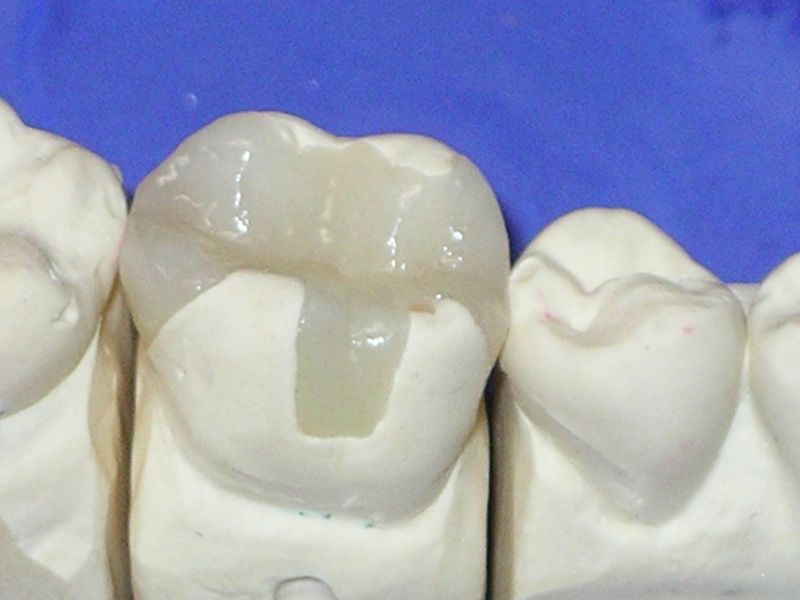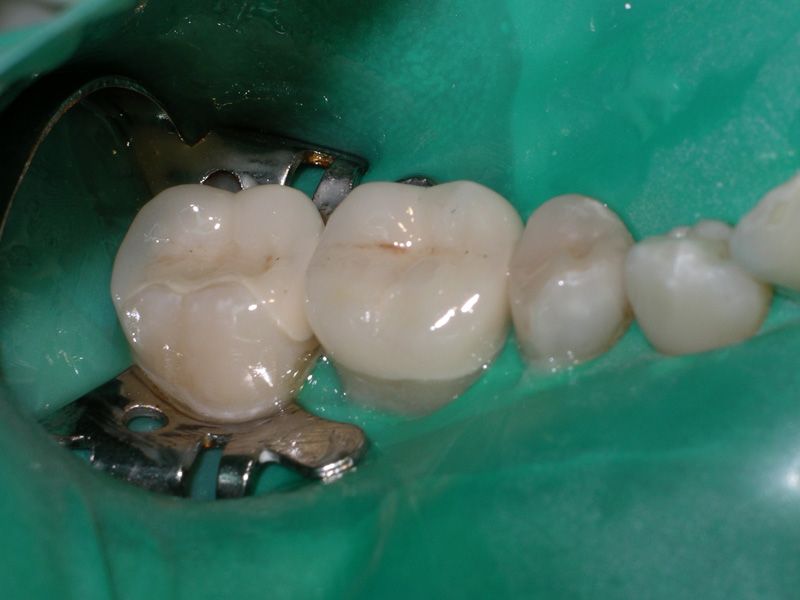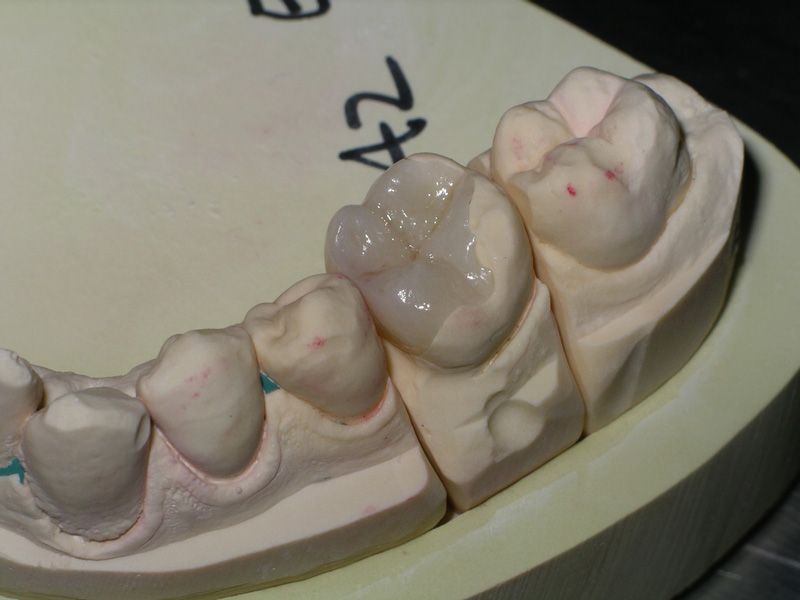
Inlays are a type of dental restoration: solid inserts that are used to fill larger cavities in the posterior toot region. They are fabricated outside the mouth with the help of an impression of the prepared tooth – either in a dental lab or directly in the dental office, using a modern Cerec-system – and then glued into place.
Composite filling – inlay – crown: Which is recommended when?
While, even in the posterior tooth region, a composite filling may well be the ideal solution for a smaller cavity, a defect that reaches deeper into the dentin is a clear indication for an inlay. The same is true for teeth that have extensive cavities: If there is only a narrow rim of remaining tooth substance, a tooth that is restored with a composite filling will not have sufficient structural integrity to withstand the forces that occur during chewing and faces an increased risk of fracturing. For many “in-between” situations, both fillings and inlays are feasible. The advantages of inlays are their high biocompatibility and great longevity as well as the excellent functional stabilization of the treated tooth and the superior aesthetics. The obvious advantage of composite fillings is their very small immediate financial and temporal expense.
You can get further Informations about the costs of veneers in our download section(german only) or directly in our Practice in 1010 Vienna.
No doubt, a composite filling as the perceived economic solution can serve you well for quite some time. However, after a couple of years, composite fillings usually fail – they fall out, or splinter, or – worst case – secondary caries develops under the filling. When exchanging the filling, more tooth substance needs to be sacrificed, and with secondary caries, a costly root canal treatment might be required.
Thus, by opting for the inlay solution right away, patients likely save themselves more hassle and additional costs in later years. Defects that are so extensive that large parts of the natural tooth crown are destroyed will require an onlay or a crown instead of an inlay. Also, inlays don’t work for incisors and canines: larger defects in the front tooth region must always be repaired with partial crowns or crowns.
We will find an individual solution for every case, deciding precisely how much of the occlusal surfaces and tooth necks need to be covered by the reconstruction. Whereever possible, we will choose an inlay over the other, more radical options, as it is most sparing towards the tooth substance.
Advantages of ceramic over gold inlays
Gold inlays (and crowns) with their excellent functional properties used to be the “gold standard” of quality dental restorations. Metal-free ceramic inlays have the same benefits,


plus two additional advantages over their golden competitors. The first plus is, obviously, their absoutely superior aesthetics. Not only the color of modern ceramic materials, but also their interaction with light resemble that of dental enamel so closely that it has become all but impossible to distinguish between natural tooth and ceramic reconstruction.
The second advantage is the increased structural integrity of a tooth with a ceramic inlay: Gold inlays are simply cemented in place, while the adhesive bond that is created between ceramic inlay and enamel/dentin provides some extra stability for the tooth. We use a ceramic material that has about the same hardness as dental enamel. Therefore, abrasion of either the opposite tooth or the inlay are not an issue.
Placing a ceramic inlay
After the cavity has been prepared into a box-like shape, we take an impression of the prepared tooth – either using an impression tray, or the modern way, with the Cerec camera. The dental lab technician or the computer will use that actual or optical impression to create a model of the tooth and construct an inlay that will fit into the cavity. The upper rims of the inlay, its contacts with the neighboring teeth and the finer details of the occlusal surface are adjusted by hand – either at the monitor, or at the work bench. Thus, even with the highly automated Cerec technique, expertise and experience are still required to create beautiful reconstructions that fit precisely and function well.
Cerec inlays can be glued right in during the first (and only) appointment. When inlays are fabricated in the lab, the cavity must be temporarily closed, and a revisit must be arranged (dental labs usually take about a week to produce a ceramic restoration). Inlays are bonded to the tooth using modern adhesive technique. A Kofferdam membrane excludes moisture – even respiratory moisture – while the multistep bonding process proceeds. The result is a tight adhesive connection between tooth and ceramic inlay that provides true structural stabilization and decreases the risk of secondary caries to almost zero. Loosening or loss of an adhesively bonded inlay are all but impossible. After the local anaesthesia has worn off, tooth and inlay can be subjected to normal functional strain right away.
Ceramic inlay advantages at a glance
- Ceramic inlays are very long-lasting solutions
- No more lost or broken fillings: Avoid frequent drilling and loss of additional tooth sustance
- The risk of secondary caries developing under an inlay that has been expertly glued in place is much lower than for a composite filling
- Ceramic inlays stabilize the tooth
- Ceramic is a highly biocompatible, aesthetically pleasing material for dental reconstructions

